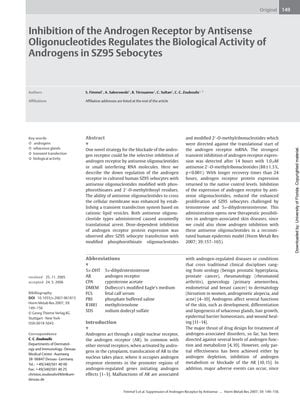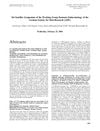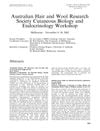Inhibition of the Androgen Receptor by Antisense Oligonucleotides Regulates the Biological Activity of Androgens in SZ95 Sebocytes
February 2007
in “
Hormone and metabolic research
”

TLDR Blocking the androgen receptor in skin cells reduces their growth response to male hormones, suggesting a possible treatment for skin conditions linked to androgens.
The study described the use of antisense oligonucleotides modified with phosphorothioates and 2′-O-methylribosyl residues to downregulate the androgen receptor in cultured human SZ95 sebocytes. A transient transfection system using cationic lipid vesicles was developed to enhance cellular uptake of these molecules. Both types of antisense oligonucleotides induced a dose-dependent inhibition of androgen receptor protein expression, with the most significant reduction observed at 1.0 μM concentration of antisense 2′-O-methylribonucleotides, achieving an 88±1.3% decrease (p<0.001) after 14 hours. However, androgen receptor protein levels returned to normal after more than 24 hours post-transfection. The inhibition of androgen receptor expression by these antisense oligonucleotides also reduced the testosterone and 5α-dihydrotestosterone-induced proliferation of SZ95 sebocytes. These findings suggest potential therapeutic applications for androgen-associated skin diseases, as evidenced by successful androgen inhibition in a reconstituted human epidermis model.


